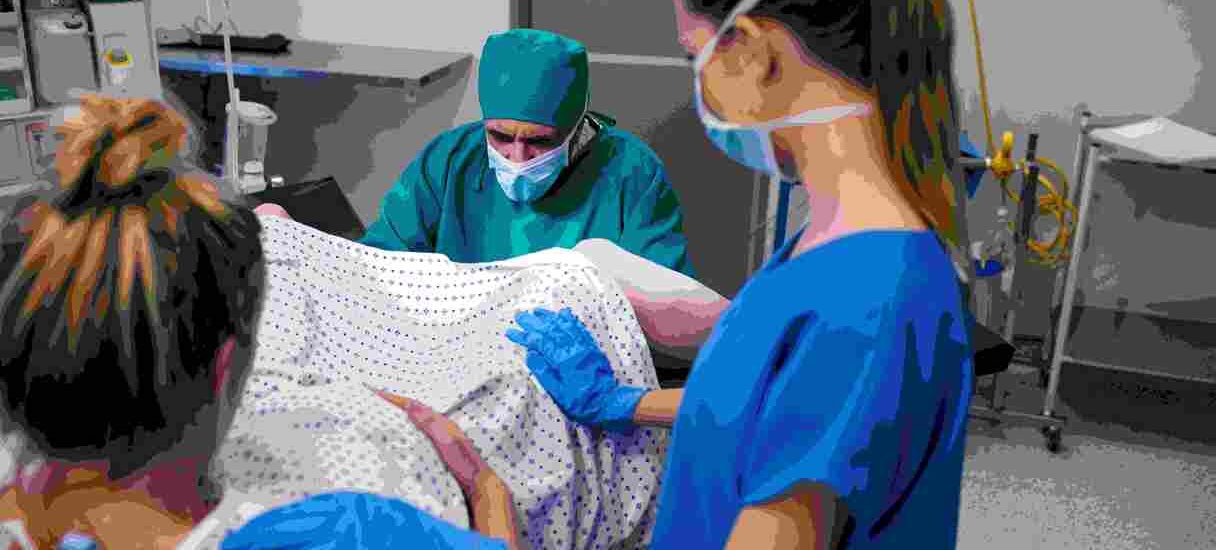


To manage the pain during labour and delivery, these childbirth pain relief options can make the birthing process less painful. In this blog, we will guide you through the different pain management options during labour.
Becoming a mother and giving birth are the most joyous moments for every woman in the world. This exciting journey comes with immense joy and happiness however, the birthing process is often painful.
Everyone’s labour is unique, and so is the pain during childbirth. The process of labour and delivery can cause sensations and discomfort. The level of pain felt during childbirth varies from pregnancy to pregnancy and can depend on several factors, such as the size and position of your baby, your level of tolerance, the method of delivery, and how strong the contractions are.

Are you a first-time parent? You might be nervous and thinking about how painful childbirth is. Childbirth is painful! Most people indeed experience some pain during giving birth, and the level of pain can vary from person to person.
During labour, you experience pain because of the contractions of the muscles of the uterus and the pressure on the cervix. During childbirth, the uterus contracts, i.e., tightens and releases, so that the baby can be moved down to the birth canal.
Another reason for pain is pressure on the bladder and bowel by the baby’s head and stretching of the birth canal and vagina.
Let’s guide you with some pain management options, including non-medical techniques and medical pain relief options, to give you huge relief and help in pain management labour. These techniques can help you better cope with labour and delivery and do not make your labour less natural.
Discuss your pain management labour options during childbirth with your doctor to decide on your labour.

One of the pain management labour techniques includes breathing techniques that emphasise controlled breathing patterns to help lessen the anxiety and pain felt during contractions.
In this technique, you have to concentrate on your breathing, which eventually distracts you from pain, relaxes your muscles and mind, and maintains your oxygen supply. You can learn these breathing techniques during childbirth education classes and practice them before going into labour. Some of the breathing techniques include the Lamaze technique and the Bradley method.

Hydrotherapy can be used during any part of labour, such as early labour, active labour, and pushing phase. This technique includes immersion in warm water during labour. By immersing in warm water, muscles get relaxed, which provides comfort. As the water reduces pressure on joints, it allows the mothers to move freely and experience less pain during contractions.
Hydrotherapy is a good option for people who want to avoid pain medications and other medical techniques, as it also relieves anxiety during labour.

Massage during labour is effective because it involves gentle pressure and touch on specific areas that help alleviate pain.
There are numerous benefits of massage before, during, and after labour, like reducing anxiety and stress, lowering the pain in muscles and joints, and improving circulation and blood oxygenation, which is helpful for the baby.
Before trying any massage therapy at any time during pregnancy, you should talk to your doctor first and then look for a professional massage therapist.
Hypnobirthing is a pain management technique that is used during labour and birth. This technique includes self-hypnosis, relaxation, and visualisation that will ease your pain and anxiety.
Through this, expectant mothers can go into a state of deep relaxation by visualising the birth of the baby and holding it in their arms. These types of imaginations and affirmations empower you and promote natural pain relief.
For some people, self-hypnosis is easy, and others respond well with the assistance of a therapist.

Epidural anaesthesia is one of the most effective methods of pain management during labour. It can be used in vaginal deliveries as well as caesarean deliveries, as it allows the mother to stay awake during the childbirth. In this pain management technique, doctors inject anaesthetic medicine into the epidural space in the spine. This injection can numb the lower part of the body, and the baby’s heart rate will be continuously monitored.
As this technique comes with several complications, it is therefore essential to discuss it with your healthcare provider, who will make suggestions according to your specific condition and health.
Nitrous oxide is also known as laughing gas, and it is also one of the techniques that are used to lower the pain during contractions in labour.
Under this technique, nitrous oxide is mixed with oxygen and then administered to the expectant through a face mask and a tube. After this, whenever you want to use the gas, you have to hold it and breathe in deeply. The gas will not affect the baby and can be used at any stage of labour.
A spinal block is the same as epidural anaesthesia. A slight difference is that it involves injecting anaesthetic medication into the spinal fluid. This technique is mainly used for caesarean deliveries and numbs the lower body quickly.
These are some of the pain management options during labour. You can discuss this with your medical professional and choose the one that suits you and your condition.
Childbirth and labour are individual experiences for every woman, as is the pain associated with them. From conception to birth, a woman’s body experiences several physical and mental changes, aches, and pains.
To help manage the pain and discomfort of labour, we discussed various options that include medical and nonmedical techniques such as massage, epidural, spinal block, hydrotherapy, and several breathing techniques.
Each of the options can help alleviate pain during labour and delivery and provide you with a memorable childbirth experience.
It is important to discuss the pain management labour options with your healthcare provider so that they can suggest a tailored approach that promotes both comfort and safety.